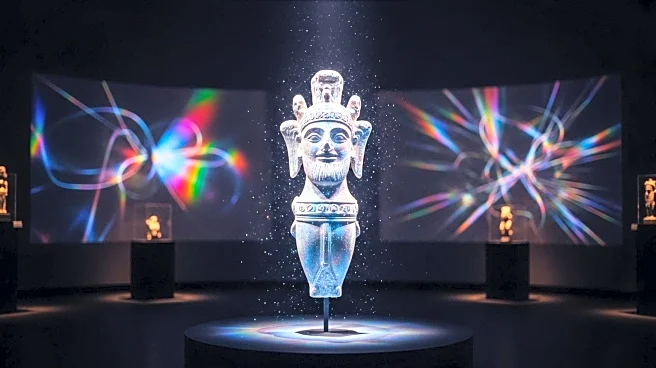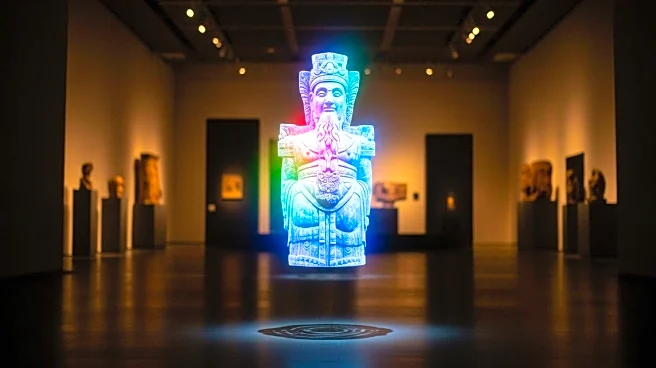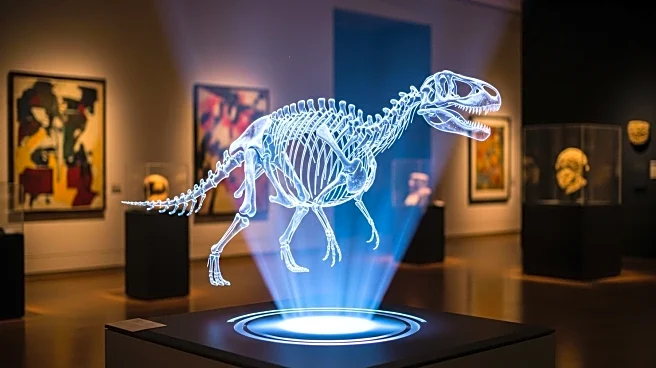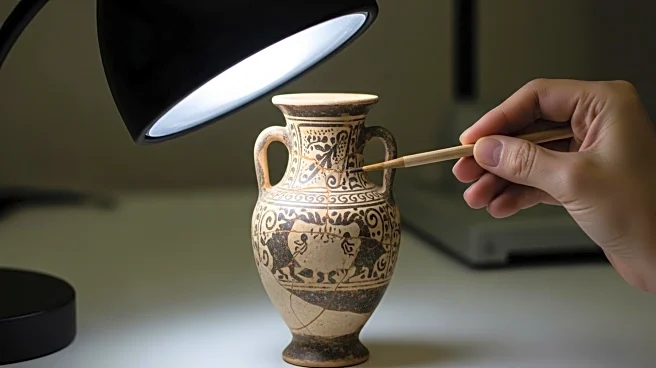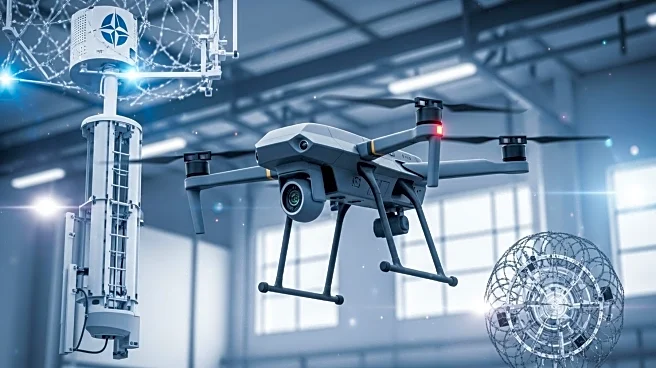What is the story about?
What's Happening?
Museums are increasingly adopting holographic technology to enhance visitor engagement and preserve cultural heritage. This technology allows museums to display 3D composite images and holograms of artefacts, providing a realistic visual experience that can substitute for physical objects. The Byzantine and Christian Museum in Athens, for example, has collaborated with the Hellenic Institute of Holography to create OptoClones, which are full-color holograms of selected objects. These holograms are used to replace originals on temporary loan, offering viewers an accurate perception of the artefacts. Holography is also being used to document and reconstruct artefacts before further degradation occurs, as demonstrated by the Fabergé Museum in Germany, which produced holographic replicas of selected works of art. This approach not only preserves the artefacts but also allows for itinerant exhibitions, making cultural relics accessible to a wider audience.
Why It's Important?
The use of holographic technology in museums is significant as it addresses several challenges faced by cultural institutions, such as the preservation of fragile artefacts and the high costs associated with insuring and transporting valuable items. By creating holographic replicas, museums can protect original artefacts from damage while still providing visitors with a realistic viewing experience. This technology also enables museums to share their collections more broadly, overcoming physical and logistical constraints. Additionally, holography offers a scientific approach to preservation, allowing researchers to document artefacts in detail before they deteriorate further. The integration of holography in museum displays enhances visitor engagement by providing a dynamic and immersive experience, potentially increasing public interest and attendance.
What's Next?
As museums continue to explore the potential of holographic technology, we can expect further innovations in how cultural heritage is presented and preserved. The success of current projects may encourage more institutions to adopt holography, leading to wider accessibility of artefacts and increased collaboration between museums and technology providers. Future developments could include more advanced holographic displays that offer interactive experiences, allowing visitors to engage with artefacts in new ways. Additionally, the use of holography in temporary exhibitions could become more common, enabling museums to reach audiences beyond their physical locations. As the technology evolves, it may also become more cost-effective, making it accessible to smaller institutions with limited budgets.
Beyond the Headlines
The adoption of holographic technology in museums raises important ethical and cultural considerations. While holograms provide a visually accurate representation of artefacts, they cannot replace the intrinsic value of physical objects. Museums must balance the use of technology with the preservation of authentic cultural heritage. Furthermore, the reliance on digital reproductions may impact the traditional role of museums as custodians of physical artefacts. As holography becomes more prevalent, institutions will need to navigate these challenges and ensure that technology complements rather than replaces the experience of viewing original works of art.
AI Generated Content
Do you find this article useful?
